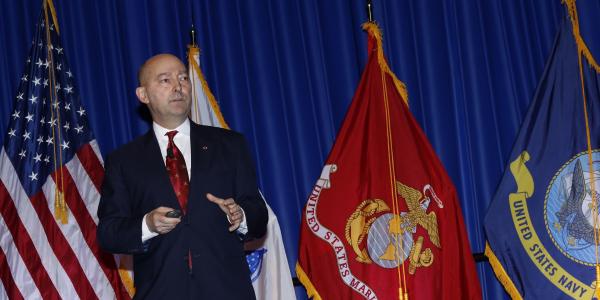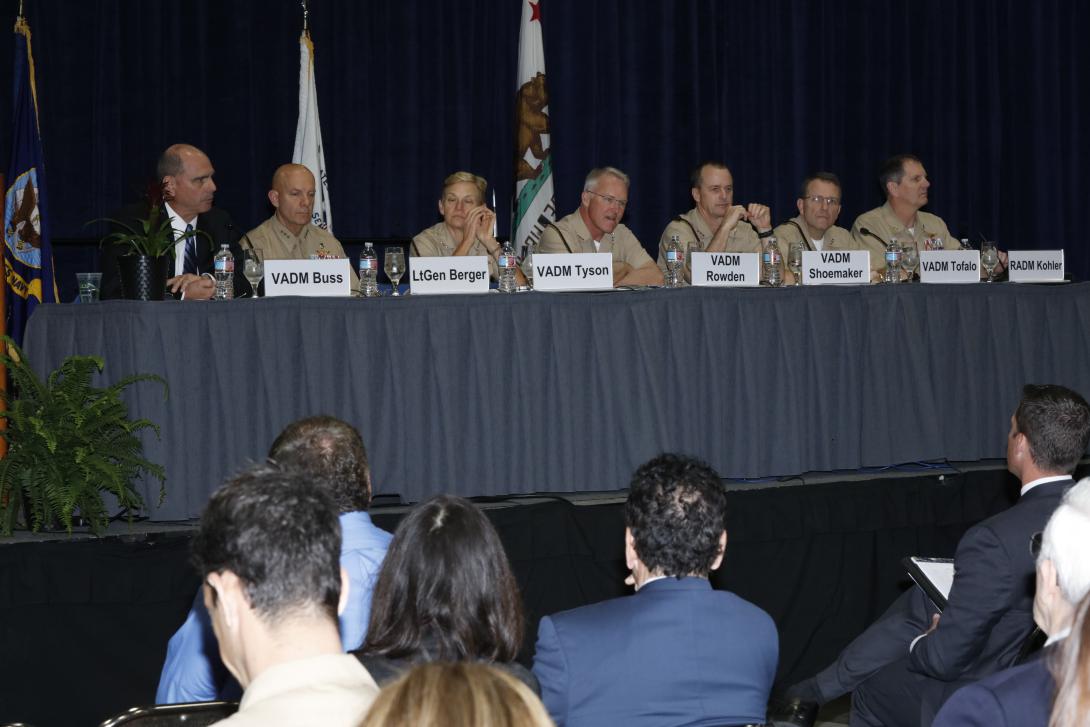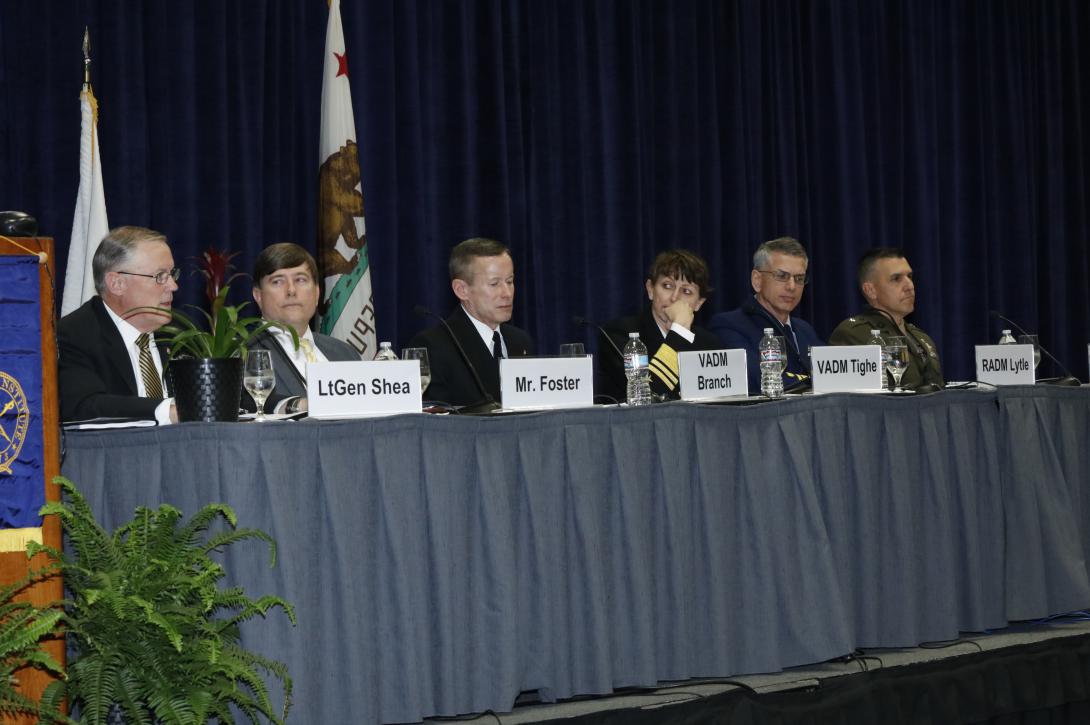The Synergy of Threats and Funding Limitations Tax the Force
West 2016
The SIGNAL Magazine Online Show Daily, Day 1
Quote of the Day:
“We assume the information environment is a contested space.”—Lt. Gen. David H. Berger, USMC, commanding general, I Marine Expeditionary Force
The threat picture facing the United States and the Free World continues to grow in size and complexity, while funding to address its multifaceted nature remains tight. The U.S. Navy and the U.S. Marine Corps are struggling to meet modernization needs as they concurrently deal with new requirements such as cyber capabilities.
Not only are rogue nations emerging to cause trouble far away from their own borders, but also established countries suddenly are seeing and acting on opportunities to threaten or even encroach on neighbors. The maritime environment is increasing in importance for economic growth, while the global nature of cyberspace renders political borders immaterial.
These points were discussed by speakers and panelists on the first day of West 2016, being held in San Diego February 17-19 by AFCEA International and USNI. The three-day conference is centered on the theme, “How Do We Make the Strategy Work?”
The strategy is influenced largely by the threat picture, which features North Korea front and center, according to the former supreme allied commander Europe (SACEUR). Adm. James G. Stavridis, USN (Ret.), dean of The Fletcher School of Law and Diplomacy, described the Hermit Kingdom as the most dangerous country in the world during his opening keynote address.
“They have a young, untested, untried, morbidly obese leader that has nuclear weapons,” Adm. Stavridis said in referring to Kim Jong Un.
Yet other threats loom large on the international stage. China continues to flex its muscle building islands to claim territory in the South China Sea. China’s claim to the South China Sea is unsupportable, Adm. Stavridis offered, adding it will lead to conflict not just between the United States and China but also with other Pacific partners.
Russia does not hold back in its efforts against other nations, particularly Ukraine. “Hybrid warfare has been used very effectively in Ukraine, and we haven’t seen the last of it,” the admiral offered.
The Islamic State of Iraq and the Levant (ISIL), which the admiral referred to in its shortened form, also poses a new type of threat. Along with its viciousness, ISIL has access to considerable resources. “The Islamic State is different because they raise money like a machine,” Adm. Stavridis said. He also noted that social media is ISIL’s command and control network.
Iran poses a threat because of the cash flow it is experiencing with the lifting of sanctions in the wake of the recent nuclear deal. “As Iran comes off of sanctions, they will think of themselves as an empire,” Adm. Stavridis stated, pointing out Iran’s long imperial history.
Above all, cyber is what keeps him awake at night, Adm. Stavridis declared. “Cyber is where we see the greatest mismatch between level of threat and level of preparation,” he said. Virtually every malefactor has operations in cyber, and some—such as Russia—are combining cyber with traditional military operations.
“Georgia will go down in military history as the first nation to undergo a kinetic attack and a cyber attack at the same time,” the admiral said, referring to Russia’s invasion. “We have not seen the last of it.”
The key to countering these threats lies in reaching out to other nations, the former SACEUR stated. This strategy runs counter to global security thinking in the last century, which is one reason why the two most devastating wars in history took place then.
“The 20th century was about building security by building walls,” he said, citing the Maginot Line and the Berlin Wall as two obvious examples. “Building walls doesn’t build security,” he declared.
Nations need to understand each other better and reach out to one another, the admiral continued. Partnering against the diverse threats is the key to maintaining security. India, for example, is the world’s largest democracy and a logical choice to be a partner with the United States—perhaps eventually becoming an ally, he suggested.
And, mixing soft power with hard power is vital. “Wikipedia is the symbol that no one of us is as powerful as all of us working together,” the admiral stated.
Adm. Stavridis also called for the creation of a Cyber Force. Panelists throughout the day offered similar slants on the importance of cyber.
Lt. Gen. David H. Berger, USMC, commanding general, I Marine Expeditionary Force, said, “We assume the information environment is a contested space.” He added that he worries about threats that will go after applications and not networks, keeping the networks up so they can wreak more havoc.
Vice Adm. Jan E. Tighe, USN, commander, U.S. Fleet Cyber Command and commander, Tenth Fleet, noted, “I have to fight with the capabilities I have.” The Navy’s ability to operate the network as a warfighting platform has a lot to do with the staff’s ability to maneuver the network, she added.
Adm. Tighe also pointed out an important aspect of cyber training. “We always believed that, in cyberspace, keeping our folks on mission is all the training they need. But we need a training environment that goes beyond what our operators are dealing with on a daily basis.”
Brig. Gen. Dennis A. Crall, USMC, director, C4 and chief information officer (CIO), U.S. Marine Corps, offered a different twist on the insider threat. “The biggest threat isn’t the digital immigrants—we read rules and follow them,” he declared. “The digital natives ignore rules and connect everything” to the network.
With the dual threats of increased transnational aggression and cybermarauders, the Navy must continue to modernize its force. Vice Adm. Joseph P. Mulloy, USN, deputy chief of naval operations for integration of capabilities and resources, described today’s world as “the most challenging and turbulent since World War II.” Paraphrasing a line from the Blues Brothers movie, he said, “A guy named Putin is putting the band back together.”
The U.S. Navy can expect to receive from 87 percent to 94 percent of its funding every year through 2021. However, this also means the sea service will not receive full funding, and it must make do with carefully selected priorities. The Budget Control Act will inhibit funding until 2021, which comes amid a time of challenges.
The Navy has been able to modernize by incorporating economically efficient capabilities, but much remains to be done. The sea service is making significant investments in aviation, Adm. Mulloynoted, but it needs the RAQ-25 unmanned aerial vehicle quickly. Other critical capabilities include the SM-6, the LRASM, the HVP and maritime TACTOM.
He cited an old saying about Navy chiefs squeezing nickels “until the buffalo squeaks,” advising chiefs today to watch their spares closely. One drawback is the Budget Control Act is not indexed to inflation, so costs might increase as years pass until 2021.
On Day 2 of West 2016: Addresses by Vice Adm. Ted Branch, USN, deputy chief of naval operations for information warfare, and Adm. Scott H. Swift, USN, commander, U.S. Pacific Fleet; panels on delivering capabilities to the warfighter and the view from Asia-Pacific; and five continuing education sessions.







Comments